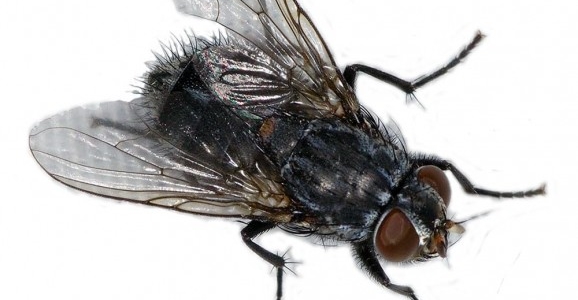Turning Up The Heat, Literally — Lasers Make Flies Fall In Love
This article is more than 2 years old
 Courtship rituals are some of the most fascinating and downright bizarre acts of the natural world. This applies to humans as much as any other creature. Strange stuff makes us fall in love: a look from across a bar, the pitch of a laugh, pheromones. I’ve yet to see a person fall in love at the flip of a switch, but now I can say I’ve seen it happen to a fly.
Courtship rituals are some of the most fascinating and downright bizarre acts of the natural world. This applies to humans as much as any other creature. Strange stuff makes us fall in love: a look from across a bar, the pitch of a laugh, pheromones. I’ve yet to see a person fall in love at the flip of a switch, but now I can say I’ve seen it happen to a fly.
I’ve written about optogenetics, the rapidly advancing field that studies controlling brain cells and behavior with light, a few times recently. Most optogenetics experiments have been conducted on mice, which scientists prime by adding genetic material to their brain cells and/or using fiber optic cables, which helps facilitate the experiment. But flies are a bit different — they’re too small for fiber optics, and their exoskeletons block most light. So neuroscientists at the Howard Hughes Medical Institute got creative. They decided to pursue thermogenetics — the activation of neurons via heat instead of light. Previous studies had been conducted on the TRPA1 protein, which, when added to a fly’s brain cells, can be activated by heat and change the fly’s behavior. But there’s a lag time of about five minutes between the delivery of heat and the noticeable effects, and scientists wanted a more immediate response.
They’ve developed something called FlyMAD — the Fly Mind-Altering Device. It’s basically a box that the scientists put the flies in, which also contains a video camera. Then, instead of heating up the box, the device shoots a laser at the fly’s head, heating it up. This sounds like the premise of a bad horror movie, doesn’t it? The Fly meets Altered States, maybe?
So, how did it work? Exceedingly well. The scientists gave the flies TRPA1 and then used the laser in the device to trigger the protein. When it did, the flies got amorous. And not with each other. Each fly was in the device alone — or rather, not with other flies, but with a few balls of wax. You might think that wax wouldn’t make for a particularly fulfilling partner, but the flies apparently thought otherwise. As soon as the flies were activated by the laser, they started trying to mate with the wax, which is about as weirdly adorable as it sounds. The video of the fly below shows that the fly persisted for a good 15 minutes after the laser was turned off, which means that the heat generated by the laser triggered something more than a fleeting change in behavior.
Just for good measure, the researchers performed a similar experiment with neurons related to coordination, rather than mating, and they were able to get the flies to walk backwards when they turned on the laser. It’s a good thing the flies aren’t capable of advanced cognition, because they’d be seriously confused.
This work gives neuroscientists insight into neural circuitry, and how they can control behavior and brain responses via external stimuli such as light and heat. Though, if anyone ever tries to get me to mate with a ball of wax, it better at least be shaped like Han Solo.












